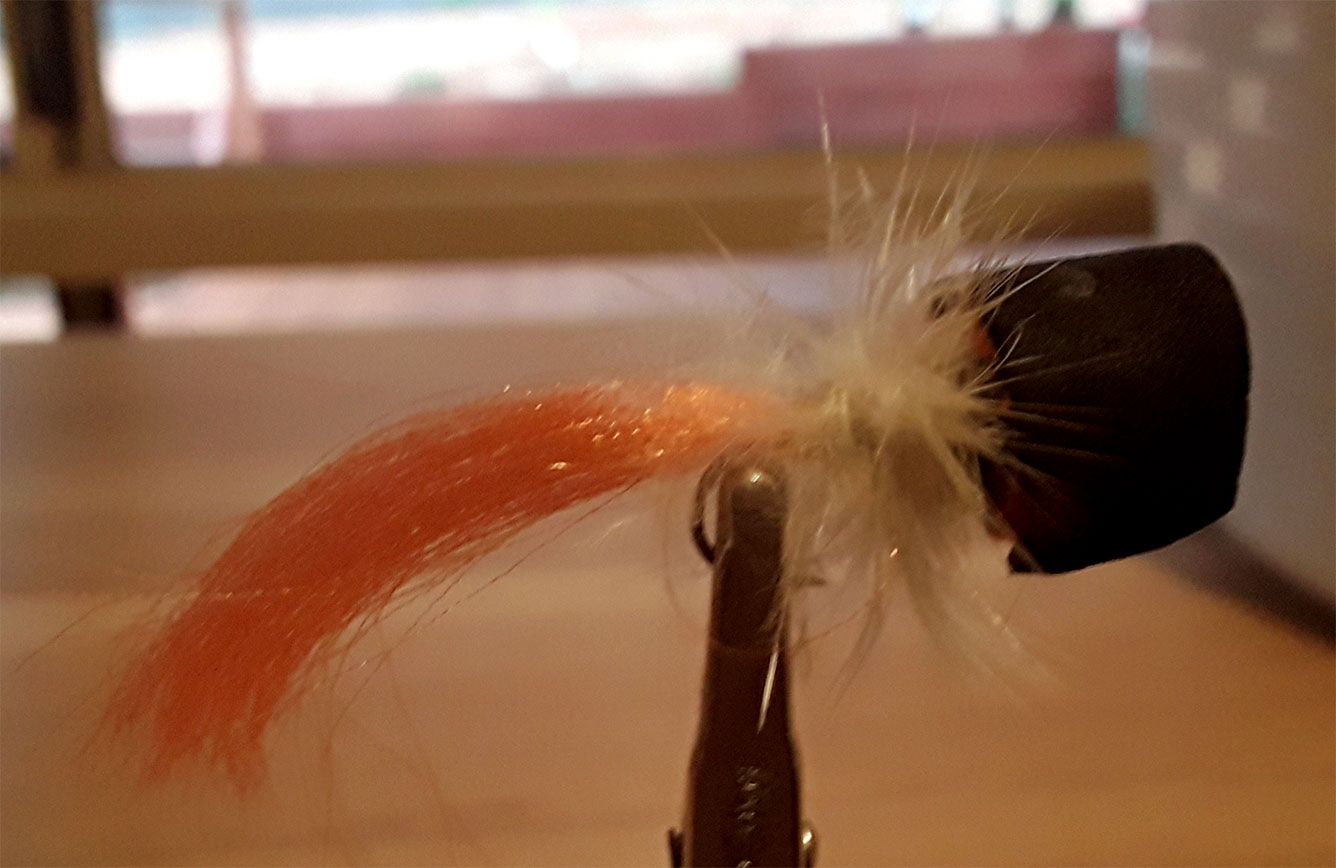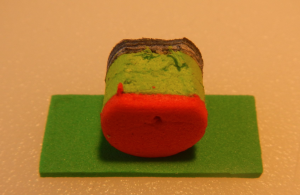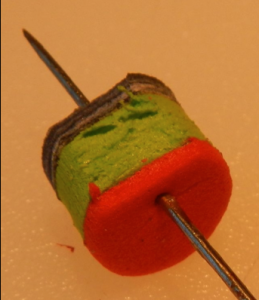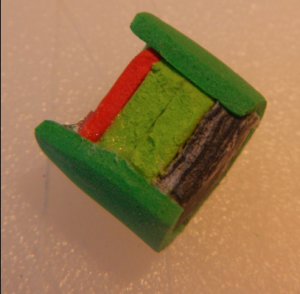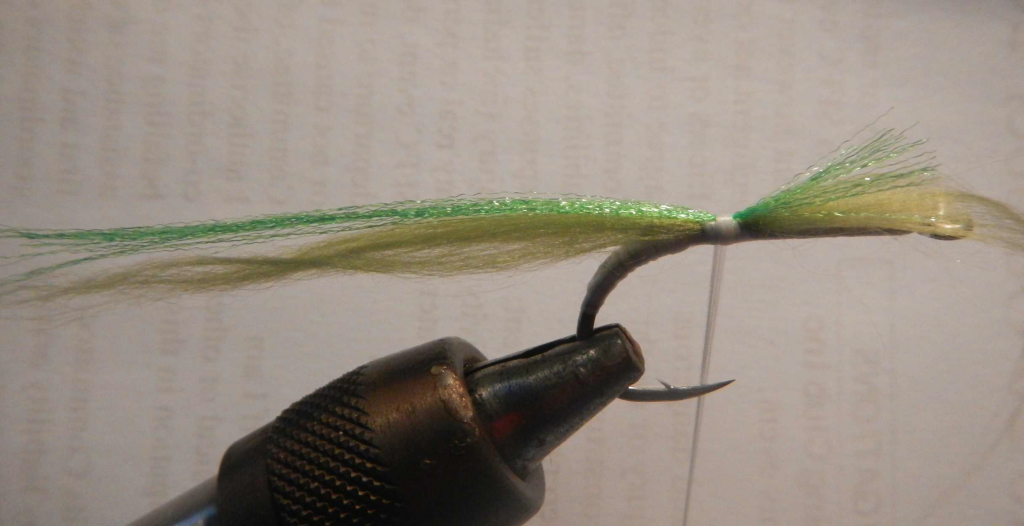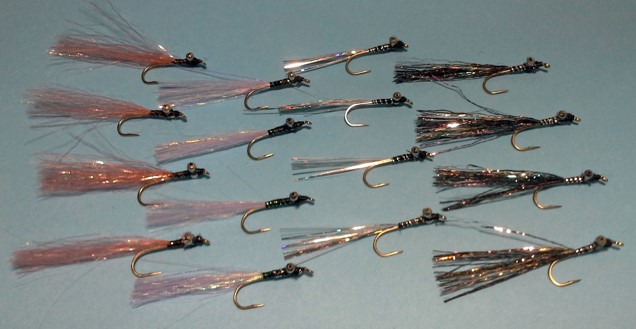Vince Margossian’s Loud Mouth Popper (The LMP) is really what it says – stripped in vigorously it creates plenty of noise by splashing its way along the surface. Fished this way the LMP can be heard up to 50m away – that is why the bass and other fish find it irresistible. Vince developed this fly over many years fishing Queensland for bass –the fly has won awards and his ability to catch fish is legendary.
Materials:
There is a heap of room to play with the LMP as it can be used like the JOS gurgler; for a variety of fish and in a variety of colours. But I suppose it is the “must have” for bass. The bream seem to like it in brighter colours. The LMP is really a very easy tie and replacement for the traditional surface fly – the Dahlberg Diver.
Hooks
You need a hook with a wide gap. My favourite is Gamakatsu SL12S in size 2 (or SIWASH). Alternatively Mustad 34007 and the Daiichi 2546. If the LMP is only to be used in the fresh Tiemco TMC 2499SPBL, Mustad Circle Hook and the old specialist, Dahlberg Diver Hook – Mustad 37187 are the go.

Body, Front
- Glue a few sheets of closed cell foam together (about 10mm thick) with super glue and hit with a hole punch. This makes a multi-coloured cyclinder.
- Cut about 1/5 off to make a flat bottom – cover with a hood (1or 2mm thick foam) so there is an overlap of 2mm. Vary the overlap depending on how much splash you require.
Body, Rear
- Chenille, Small Antron Chenille in Chartreuse and then suitable hackle long enough to imitate legs.
Tail
- Polar Fibre, Marabou or Neer Hair – mixed with Organza has about as much flash as you need.
Thread
- Mono Lead – 0.20 lead wire or snip off a small piece of lead.
Tying Instructions
The Head
It’s easier to make about ten or fifteen heads at a time.
- Laminate several layers of closed cell foam – super glue or contact cement – various colours – to about 10mm thick. This can vary depending on hook size and length – the head is about half the length of the shank.
- Using hole punch, punch out any number of heads – 12mm dia punch is a good size, 10mm for smaller flies.

- Cut the bottom flat, ie. cut 1/5 off the diameter.
- Make a hole near the flat end of the head ready for the hook.
- Cut 1mm thick foam, to be used as the hood – 2 mm is OK. The hood should extend about 2mm past the eye end of the head. This is the blooping end.
- Super glue the hood all the way around to the flat. The hood should overlap about 2mm forward of the head, eye end of the hook and trim if necessary. The sparkle coated foam from Spotlight is good for bream LMPs.
- Wrap base around hook shank and tie in lead just above bend of the hook. Use 5 turns of 20 gauge lead, over wrapped and add a small dab of super glue.
- Tie in tail of polar fibre, about the length of the hook around the bend.
- Tie in chenille and hackle to the bend end of the hook. Tie in weed guard, recommended for bass, to about the middle of the hook. Place small amount of super glue onto the weed guard connection making sure it is well secured. Note: Make sure there is enough room between the weed guard and the eye to push the head on later – check the length of the heads already made.
- Wind the chenille up past the weed guard to the eye of the hook. Sparsely tie past the weed guard, as this is only used as a base for gluing the head. The head must slide over this part of the hook.
- Palmer the hackle up to the weed guard and secure and whip finish.

- Ensure the hole in the head is adequate to allow it to slide over the eye end of the hook. Super glue the chenille from the weed guard to the eye and slide the head on while still liquid and hold. You need to be quick and positive to do this. Stop the head at the weed guard.
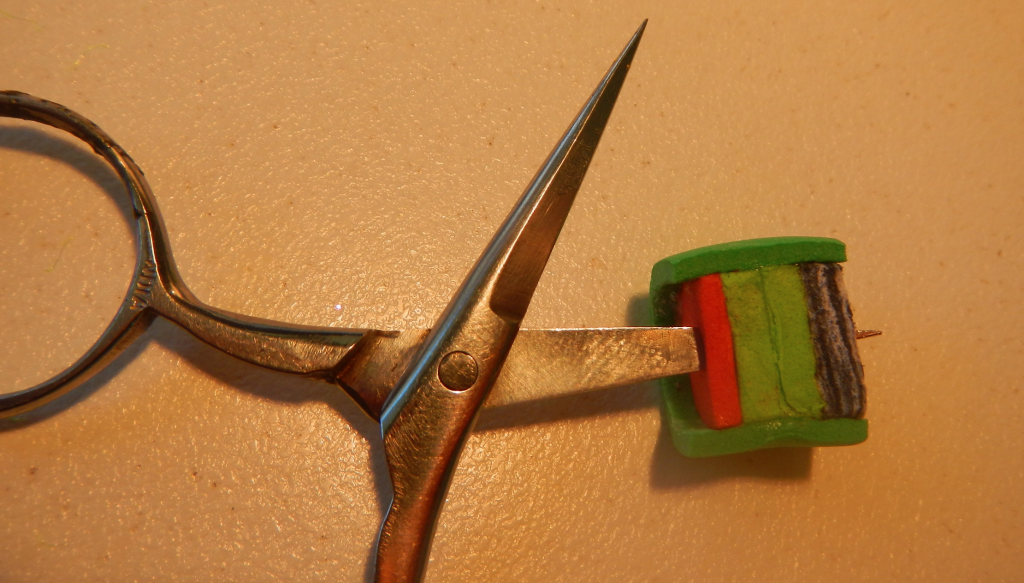
- Araldite/Epoxy/UV Cured Goo the flat or underside of the fly for improved durability.

Fishing the Loud Mouth Popper
The best way to fish the LMP is using a weight forward floating line, although you can cast this on lighter lines, 7 to 8 weight outfits seem a lot easier.
The weed guard is important, as you want to put this fly into cover as often as possible – bass hide in ambush. The fly, to be most effective needs to be accurately cast in and around cover – under trees, around fallen timber, in and over lily pads.
The fly can hit the water hard and make a splash but once on the water there are a number of variations on the retrieve. The standard is to wait a few seconds after the initial shock and then 5 to 6 fast short strips – then another pause, wait 10 seconds and then repeat all the way back.
Note, the pause allows the weighted tail to sink, making the next bloop very loud as it rises and straightens, pushing water out of the way. Be careful, as the bass are just as likely to follow the fly all the way back to your rod tip – then hit just as you are about to pick-up.
The pause catches just as many fish as the strips, so wait in anticipation. Try this retrieve a few times and then play with variation – longer pauses, two or three strips between pauses, a slow waddle all the way back – leave it in the cover with only a small twitch.
The most important aspect to fishing the LMP is the bloop – the noise and the splash made by the LMP. If yours isn’t noisy you had better make a new one.
These are fun to fish with as there is constant action and the retrieve is really up to your imagination (as are the colours).
If things are really quiet, try using the LMP with an intermediate or sinking line. As the fly floats the pause will allow the fly to rise. Another little tug on the fly line under the water pulls the fly down again. As the LMP displaces plenty of water the fish will pick up on the vibrations and encourage a take.
Tie a few with a little sparkle for bream – use floating and intermediate lines. All good fun!
